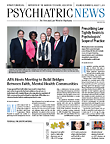On June 28, a sigh of relief was generated across northern California as the board of directors of the Golden Gate Bridge, Highway, and Transportation District approved funding to add suicide barriers to the Golden Gate Bridge.
“We did it!,” shouted Sue Story, just moments after the directors announced that they had unanimously approved the $76 million funding package. Her son, Jacob, died after jumping from the bridge in 2010. “It’s no longer the Bridge of Death,” Story shouted, with tears, in the lobby of the Golden Gate Bridge Administration Building.
Since the opening of the iconic structure in 1937, more than 1,600 people have jumped to their deaths from the bridge, including 46 last year, according to the Bridge Rail Foundation, an organization dedicated to preventing suicides from bridges. The Golden Gate Bridge is reported to be the most-used suicide site in the United States, second in the world to Nanjing Yangtze River Bridge in China.
In 2008, the Golden Gate Bridge, Highway, and Transportation District took the historic step of approving the permanent suicide deterrents that will be placed 20 feet below the bridge’s sidewalk, followed in 2011 by approvals for the design of the steel-net barriers; however, securing funding for the net was plagued by much opposition, according to Saint Francis Memorial Hospital Medical Director of Psychiatry Mel Blaustein, M.D., who organized and chairs the Task Force for the Golden Gate Bridge Suicide Barrier of the Psychiatric Foundation of Northern California.
“There were several myths that we had to counter” that opponents offered as reasons not to fund the barrier, said Blaustein in an interview with Psychiatric News. He said that arguments by naysayers ranged from “barriers would ruin the aesthetics of the bridge” to “they’ll just go somewhere else to attempt suicide,” and finally, “it’s too expensive to fund.”
To refute these opponents, Blaustein, who is a past president of the Psychiatric Foundation of Northern California, and the task force showcased the findings from a 1978 study showing that 95 percent of 515 individuals who were forcibly stopped from jumping off the Golden Gate Bridge by the California Highway Patrol were still alive 25 years later or died from natural causes. In addition, emphasized Blaustein, in 2013, President Obama authorized federal funding for bridges that are more prone to be sites for suicide—allowing the addition of deterrents for such structures.
Installation of the multimillion-dollar suicide barriers is expected to be completed within the next three years. Caltrans and the region’s Metropolitan Transportation Commission will allocate $49 million in federal funds toward the barriers, $20 million will come from bridge tolls, and $7 million will come from state mental health funds.
Blaustein told Psychiatric News that having funds secured for the construction of the barriers “sends a message of compassion and care” for individuals with mental illness. ■

